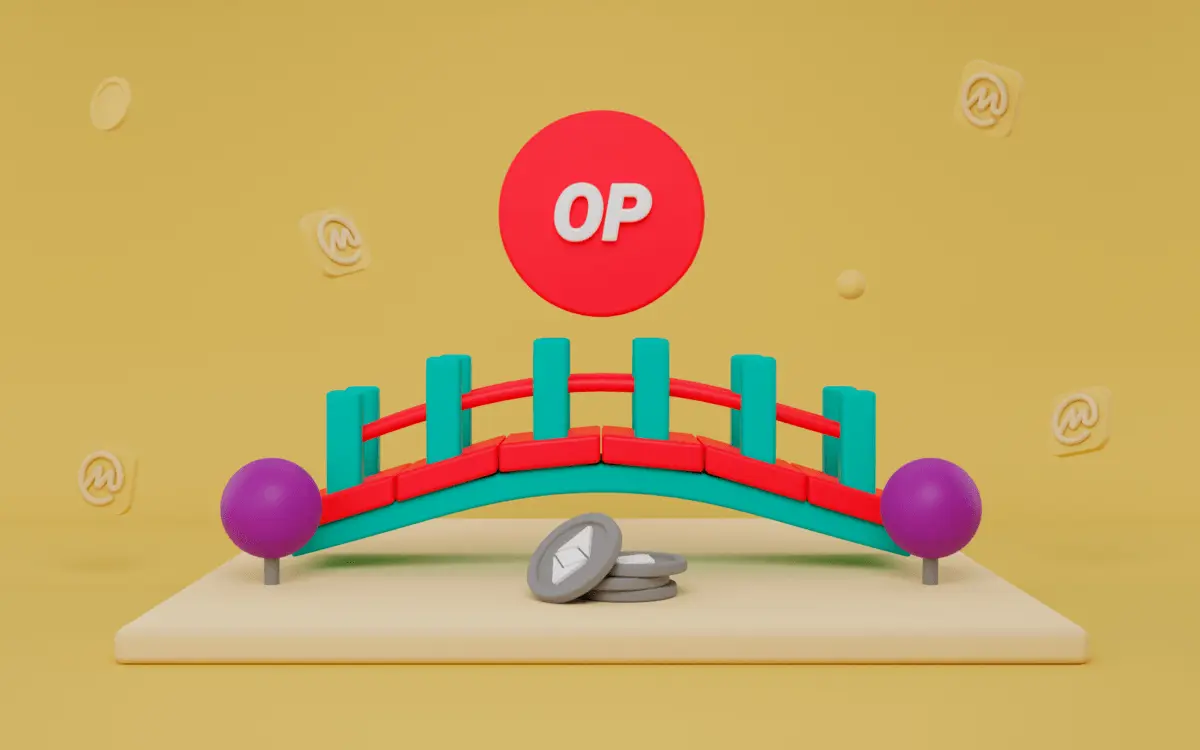Optimism Bridged vs Optimism: Understanding the Difference
In the ever-evolving world of blockchain technology and cryptocurrency, two terms that often come up in discussions are “Optimism bridged” and “Optimism.” While they may sound similar, these concepts have distinct meanings and implications for users and developers in the Ethereum ecosystem. This article will delve deep into the world of Optimism, exploring the differences between Optimism bridged and native Optimism, their advantages, and how they impact the broader blockchain landscape.
What is Optimism?
Before we dive into the comparison of optimism bridged vs optimism, it’s essential to understand what Optimism is and why it matters in the blockchain world.
Definition and Purpose
Optimism is a Layer 2 scaling solution for Ethereum, designed to improve transaction speed and reduce fees while maintaining the security guarantees of the Ethereum mainnet. It uses a technology called Optimistic Rollups to achieve these goals.
Key Features of Optimism
- Faster transactions
- Lower fees
- Ethereum compatibility
- Improved scalability
How Optimism Works
Optimism operates by batching multiple transactions off-chain and then submitting them as a single transaction to the Ethereum mainnet. This process significantly reduces the burden on the main Ethereum network, allowing for faster and cheaper transactions.
Understanding Optimism Bridged
Now that we have a basic understanding of Optimism, let’s explore what “Optimism bridged” means and how it differs from native Optimism.
Definition of Optimism Bridged
Optimism bridged refers to the process of moving assets from the Ethereum mainnet to the Optimism network using a bridge protocol. This allows users to take advantage of Optimism’s benefits while still maintaining a connection to the Ethereum ecosystem.
How Bridging Works
- User initiates a bridge transaction
- Assets are locked on the Ethereum mainnet
- Equivalent assets are minted on the Optimism network
- User can now use these assets within the Optimism ecosystem
Advantages of Optimism Bridged
- Access to Ethereum’s liquidity and ecosystem
- Ability to move assets between networks
- Potential for arbitrage opportunities
Challenges of Optimism Bridged
- Bridge security risks
- Longer withdrawal times when moving back to Ethereum
- Potential for bridge congestion during high-traffic periods
Native Optimism: The Core Experience
In contrast to Optimism bridged, native Optimism refers to assets and transactions that originate directly on the Optimism network.
Characteristics of Native Optimism
- Assets created and transacted entirely on the Optimism network
- No bridging required for initial asset creation
- Faster transaction finality within the Optimism ecosystem
Benefits of Native Optimism
- Reduced complexity for users
- Lower overall transaction costs
- Immediate availability of assets within the Optimism network
Limitations of Native Optimism
- Limited interoperability with other blockchain networks
- Potential for lower liquidity compared to bridged assets
Optimism Bridged vs Optimism: A Detailed Comparison
Now that we’ve explored both concepts individually, let’s dive into a direct comparison of optimism bridged vs optimism to better understand their differences and use cases.
Transaction Speed
- Optimism Bridged: Initial bridging process can be slow, but subsequent transactions are fast
- Native Optimism: Consistently fast transactions within the Optimism network
Cost Efficiency
- Optimism Bridged: Higher initial costs due to bridging fees, but lower ongoing transaction fees
- Native Optimism: Lower overall costs, especially for frequent transactions
Liquidity
- Optimism Bridged: Access to Ethereum’s vast liquidity pool
- Native Optimism: Potentially lower liquidity, but growing as the ecosystem expands
Security
- Optimism Bridged: Additional security risks associated with bridge protocols
- Native Optimism: Security inherent to the Optimism network without additional bridge risks
Use Cases
- Optimism Bridged: Ideal for users who frequently move assets between Ethereum and Optimism
- Native Optimism: Best for users who primarily operate within the Optimism ecosystem
The Impact on DeFi and dApps
The distinction between optimism bridged vs optimism has significant implications for decentralized finance (DeFi) and decentralized applications (dApps) built on these networks.
DeFi Considerations
- Liquidity pools and yield farming strategies may differ between bridged and native assets
- Arbitrage opportunities can arise due to price differences between bridged and native tokens
- Risk assessment for DeFi protocols must account for bridge security in the case of bridged assets
dApp Development
- Developers must consider whether to support both bridged and native assets
- User experience design may vary depending on the asset type used
- Smart contract interactions may require different approaches for bridged vs native assets
The Future of Optimism: Bridged and Native Integration
As the Optimism ecosystem continues to evolve, we’re likely to see greater integration between bridged and native assets.
Potential Developments
- Improved bridge protocols with enhanced security and speed
- Increased liquidity for native Optimism assets
- Seamless user experiences that abstract away the differences between bridged and native assets
The Role of Layer 2 Solutions
Optimism, along with other Layer 2 solutions, plays a crucial role in scaling Ethereum and the broader blockchain ecosystem. The interplay between bridged and native assets within these networks will be key to their success and adoption.
Making the Choice: Optimism Bridged vs Optimism
For users and developers navigating the Optimism ecosystem, choosing between bridged and native assets depends on several factors:
Factors to Consider
- Frequency of cross-chain transactions
- Desired level of asset liquidity
- Risk tolerance for bridge-related security issues
- Specific use cases and application requirements
Best Practices
- Diversify across both bridged and native assets when possible
- Stay informed about bridge security and network upgrades
- Consider transaction costs and speed requirements for your specific needs
Conclusion
The comparison between bridged and native Optimism assets shows that each has distinct benefits and challenges. Bridged assets offer better interoperability and access to Ethereum liquidity, while native assets provide a more streamlined experience with potentially lower costs and risks. Understanding these differences is key for making informed decisions in the evolving blockchain landscape. The coexistence of both asset types enhances the Optimism ecosystem, fostering innovation and adoption in decentralized finance.







